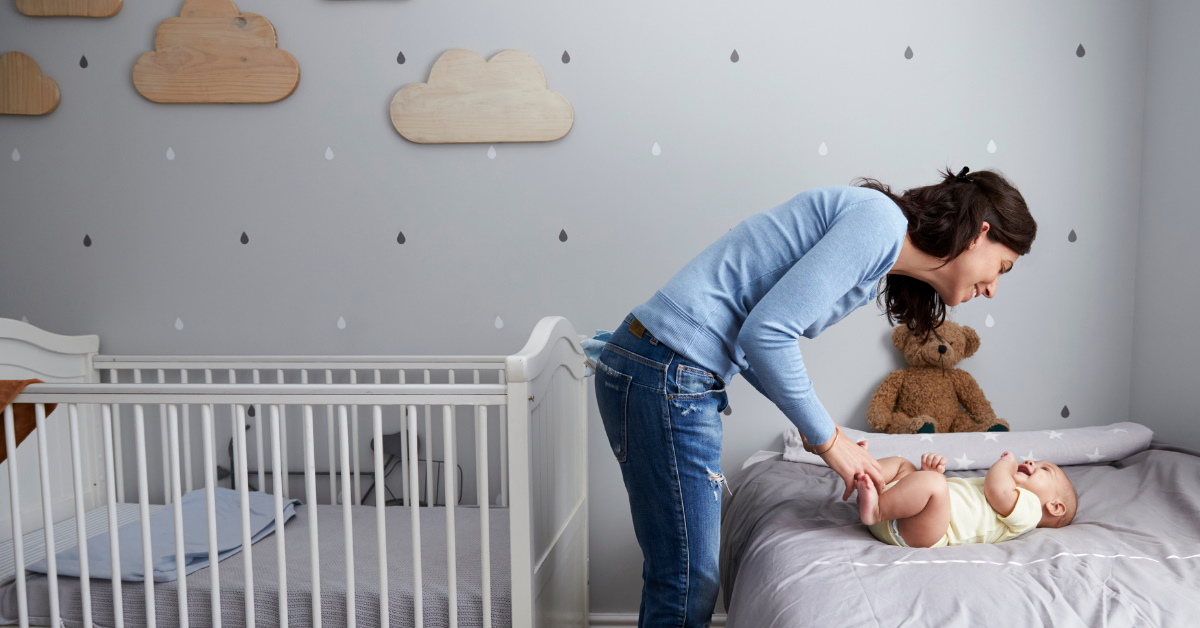Prepare Your Living Space for a Newborn With These Essential Tips
For some couples, building a family is a big priority, and it can be both an overwhelming and exciting time in life. It’s a lot of new experiences, change, and responsibility to bring a baby into the world. If you and your partner have come to the point of pregnancy, the next nine months are bound to involve a lot of planning, emotionally and financially. Although you have around nine months to prepare, it’s better to start now rather than later to prepare for your little one, especially when you’re setting up your home.
Along with purchasing baby clothes, attending a birthing class, or maybe planning a baby shower, updating your living space is an aspect of family planning to always consider. Since certain household items add up fast, it’s not a bad idea to start budgeting and figuring out your finances early for your expanding family.
Prepare Your Finances
According to a USDA study, it costs $14,846 to raise a child in their first year. That doesn’t even include the cost of bringing a baby into the world. With all the excitement of having a child, you don’t want financial struggles to get in the way. Developing a budget can help ease the burden of unwanted money stress.
 To start, figure out a spending limit. What do you need? How much do you feel comfortable spending? What necessities do you plan to get from your baby shower registry? Are you getting financial assistance from your parents? From there, map out the various expenses you’ll have when revamping your space for the baby. Some costs you may want to consider are furniture needs, such as a rocking chair, crib, dresser, or changing table. Keep in mind technology items as well, like a baby monitor or sound machine, and other necessities like home organization drawers and storage for your newborn’s belongings (diapers, bottles, formula, clothing, etc.) Extra expenses to factor in throughout your pregnancy journey might include baby-proofing your home, nursery decor, room layouts, or replacing any potential hazards like a glass coffee table. Depending on what else you need to get, remember that research is crucial. Surf the internet and get an idea of how much you’ll be spending within each category.
To start, figure out a spending limit. What do you need? How much do you feel comfortable spending? What necessities do you plan to get from your baby shower registry? Are you getting financial assistance from your parents? From there, map out the various expenses you’ll have when revamping your space for the baby. Some costs you may want to consider are furniture needs, such as a rocking chair, crib, dresser, or changing table. Keep in mind technology items as well, like a baby monitor or sound machine, and other necessities like home organization drawers and storage for your newborn’s belongings (diapers, bottles, formula, clothing, etc.) Extra expenses to factor in throughout your pregnancy journey might include baby-proofing your home, nursery decor, room layouts, or replacing any potential hazards like a glass coffee table. Depending on what else you need to get, remember that research is crucial. Surf the internet and get an idea of how much you’ll be spending within each category.
Once you figure out how much you’ll be spending, it’s time to consider your financing options. When turning your home into a baby-friendly space, it’s important to know how you will be paying for everything. Using cash from your savings or charging a credit card might be two options that come to mind. You might also compare a HELOC and personal line of credit if you’re considering all of your financing options. Learn about all your potential avenues to see what works best and makes the most sense for your project preparation.
When you finalize your financing plan for these expenses, you may realize that you’d benefit from scaling back in other realms of your life. This could involve cutting back on takeout dinners and starting to cook at home, or skipping coffee purchases at your local cafe and using your own coffee machine instead. Little changes like these can help make a big difference in your spending habits.
Organize Your Living Space
It’s best to bring your baby into a clean, organized, and welcoming environment. With an extra person in the house, you’ll want to declutter your home. Consider investing in household storage, or getting rid of things that no longer make an impact on you. You may even want to think about getting rid of extra furniture that takes up space.
It’s essential to clean and organize each room in your house so when you bring your newborn home, you’re entering a space that feels good. This goes a long way when it comes to your mental health as well. An organized space can keep you more relaxed when learning how to be a new or as an experienced parent. While cleaning, consider using all-natural products to banish toxic chemicals. Your kitchen is one of the main spaces you’ll need to find room for a good chunk of your baby’s necessities. Make space in your kitchen cabinets for bottles and their parts, bibs, formula, baby food, bowls, spoons, and cups. Don’t forget about a high chair for when they are ready for oatmeal and carrots!
It won’t be long before you will have to worry about baby-proofing your home. Before you know it, your newborn will be crawling all around the house, so it’s imperative to baby-proof your home. This includes safety locks and baby gates to keep your child safe. If you have tables, furniture, or other home features with sharp edges (fireplace), make sure to cover them up. You can use styrofoam or bubble wrap for cheap and easy coverings. Don’t forget to block open outlets and make sure to hide any objects a baby could grab.
As your baby gets older, you also might want to consider devoting a designated space as their playroom, especially if you have extra rooms in your home. This will allow you and your spouse to still have your own space, and it gives your child some extra room to play and be active. Not only that but, it gives you extra space to put baby toys and gadgets when you’re planning on having company. Having this extra space will keep your home organized and you won’t find yourself stumbling over toys that are laying around. If you don’t have a spare room, get creative with how you store items around your home to allow you more livable space.
Create Your Dream Nursery
It can be helpful to have the nursery set up a few weeks before the baby arrives. Whether you are transforming your old office space or spare bedroom, here are some things you should think about when furnishing and decorating the room.
When planning the layout of your nursery, make sure to incorporate a sleeping space, feeding and changing stations, room for the baby to play, and some storage space. The more storage for clothing, toys, and books the better! There are a variety of baby bedroom ideas on Pinterest to spark your creativity.
As a first-time parent, it can be tough to figure out what cribs or changing tables are the best fit for your child. Think about reaching out to fellow moms and dads out there for input and opinions. Hearing reviews and recommendations firsthand can be super beneficial when looking for furnishing options for your baby’s room. You may also find it helpful to check out some of the reviews and comments on big retailer websites.
If you plan on painting your baby’s room, consider using low-VOC or zero VOC paints, and make sure to do so well in advance. It’s said that you should paint a room two or more months before the baby is due to eliminate any toxic fumes.
When it’s all said and done, you and your partner will be very happy to have everything squared away before the baby comes. As soon as you discover the exciting news, let the planning commence!

About the Author: Derek Hines
Digital Marketing Specialist
Derek is originally from the great state of Wisconsin (go Badgers), but is slowly becoming a Pacific Northwesterner. As part of the Digital Marketing team, he writes extensively on storage, moving and life for West Coast Self-Storage, based in Everett, Washington.


